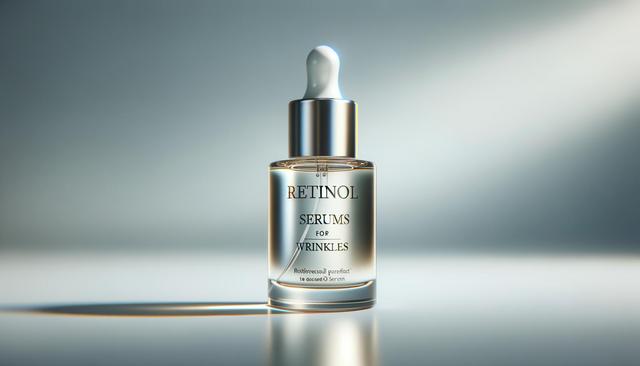A Closer Look at Retinol Serums for Wrinkles
Retinol serums help reduce wrinkles by boosting collagen and accelerating skin cell turnover. Choose formulas with hydrating ingredients like hyaluronic acid or niacinamide to minimize irritation and improve skin texture and tone.

Understanding Retinol and Its Role in Skincare
Retinol is a form of vitamin A that has become a key ingredient in many anti-aging skincare routines. It works by encouraging the production of new skin cells and increasing collagen synthesis, both of which are essential in reducing the appearance of fine lines and wrinkles. Over time, regular application of retinol can help smooth out the skin’s surface and promote a more even tone.
While retinol is available in various strengths, serums are often preferred due to their lightweight, fast-absorbing formulas. These make it easier for the active ingredients to penetrate the skin more effectively. However, because retinol can also lead to dryness and irritation, especially for first-time users, many products now include complementary ingredients to offset these effects.
Key components often found alongside retinol in serums include:
- Hyaluronic acid – helps retain moisture and reduce dryness
- Niacinamide – supports skin barrier function and soothes inflammation
- Peptides – enhance firmness and elasticity
- Antioxidants – protect against environmental damage
By combining retinol with these supportive elements, serums can provide more balanced and tolerable solutions for individuals hoping to address signs of aging without significant irritation.
Choosing the Right Retinol Serum for Your Skin Type
Not all retinol serums are created equal, and choosing the right one depends heavily on your skin type and sensitivity. For those with dry or sensitive skin, lower concentrations of retinol paired with hydrating ingredients may be more suitable. On the other hand, individuals with oily or acne-prone skin might benefit from stronger formulations or those that also contain ingredients targeting breakouts.
When selecting a retinol serum, consider the following guidelines:
- Start with a low concentration (around 0.25% to 0.5%) if you’re new to retinol
- Look for time-release formulas that deliver retinol gradually to reduce irritation
- Choose products with added moisturizers or calming agents like aloe vera
- Opt for fragrance-free options if your skin is prone to allergic reactions
Patch testing a new product before full application can also help avoid adverse reactions. It’s advisable to introduce retinol gradually into your routine, starting with two to three times per week and increasing frequency as your skin builds tolerance.
How to Incorporate Retinol Serum into Your Routine
Proper application and timing are essential for maximizing the benefits of retinol. Since retinol increases skin sensitivity to sunlight, it is typically recommended for nighttime use. After cleansing your face in the evening, apply a small amount of retinol serum to dry skin, followed by a moisturizer to lock in hydration and reduce potential dryness or peeling.
Here’s a basic nighttime routine that includes retinol:
- Cleanser – gentle and non-stripping
- Retinol serum – apply a pea-sized amount evenly
- Moisturizer – use a product with soothing ingredients
- Eye cream – optional, but choose one suitable for sensitive areas
On days when you’re not using retinol, focus on nourishing and repairing the skin barrier with hydrating and calming products. Additionally, wearing a broad-spectrum sunscreen every morning is non-negotiable, as retinol makes the skin more vulnerable to UV damage. Consistency and patience are key—most users begin to see noticeable improvements after several weeks of regular use.
Common Side Effects and How to Manage Them
Even with proper use, some people may experience side effects when starting a retinol serum. These can include redness, dryness, peeling, and increased sensitivity. These symptoms are often temporary and part of the skin’s adjustment process, but they can be managed effectively with a few strategies.
To minimize discomfort:
- Use retinol every other night or every third night when beginning
- Apply a moisturizer before and after retinol to buffer its effects
- Avoid using other strong actives (like AHAs or BHAs) on the same night
- Introduce calming ingredients such as ceramides or panthenol into your routine
Over-exfoliating or combining retinol with other harsh ingredients can worsen irritation. If side effects persist beyond a few weeks or become severe, it’s advisable to consult a dermatologist. They can help tailor a regimen that aligns with your skin’s needs while still providing the anti-aging benefits of retinol.
What to Expect: Results and Long-Term Benefits
Retinol is not a quick fix, but with regular use, it can lead to significant improvements in skin texture, firmness, and tone. Many users notice subtle changes within four to six weeks, with more pronounced results appearing after three to six months. These long-term benefits make retinol a favored ingredient among those aiming for gradual and sustained skin improvements.
Some of the visible changes you might observe include:
- Smoother fine lines and reduced wrinkle depth
- Brighter complexion and more even skin tone
- Fewer blemishes and refined pores
- Improved elasticity and firmness
To sustain these results, ongoing use is essential, along with sun protection and a balanced skincare routine. Retinol serums can be part of a broader anti-aging strategy that includes a healthy lifestyle, proper hydration, and a nutrient-rich diet. While results vary based on skin type and the concentration of retinol, most users find that the long-term benefits are well worth the commitment.
Conclusion: Is a Retinol Serum Right for You?
Retinol serums can be a valuable addition to your skincare regimen if you’re looking to address wrinkles and improve overall skin health. With various formulations available, it’s possible to find options that suit even sensitive skin types. The key to success lies in choosing the right product, introducing it gradually, and supporting your skin with hydration and sun protection. If you’re consistent and patient, retinol may become a core part of your long-term skincare goals.